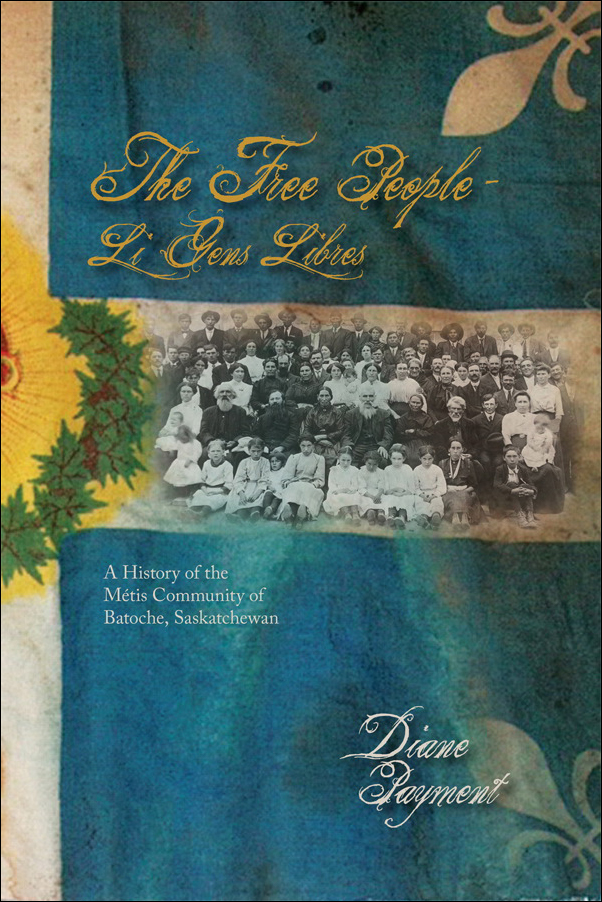
The Free People - Li Gens Libres: A History of the Métis Community of Batoche, Saskatchewan
Diane P. Payment
$29.95 CAD / $34.95 USD
432 pages, 80 illustrations
6 x 9 inches
Paperback: 978-1-55238-239-4
Library PDF: 978-1-55238-263-9
February 2009
A comprehensive history of the Métis community and history of Batoche, Saskatchewan, rooted in thirty years of documentary and field research and calling for understanding of Métis history and culture on its own terms.
Revised and expanded to include fresh research, a discussion of recent interpretive trends, and a review of new literature since the publication of the first edition in 1990, The Free People – Li Gens Libres is a comprehensive history of the Métis community and national historic site of Batoche, Saskatchewan.
Author Diane Payment has a long personal association with Batoche; her study is the culmination of thirty years of documentary and field research as a participant-observer within the community. Her inquiry draws on a range of dictated and written historical sources, both Métis and non-Métis, as well as more recent oral history narratives and personal observations.
The Free People is one of the few studies on Métis communities in western and northern Canada. Payment’s approach demonstrates that any understanding of Métis culture cannot be based on European or Euro-Canadian historical models, but on its own values and traditions. She argues that Batoche has persisted as a community despite conflict, crisis, and prejudice from immigrant ethnic groups and institutions such as the Canadian government and the Roman Catholic Church, succeeding in maintaining its uniquely Métis identity.
Diane P. Payment was born in St. Vital, Manitoba, near the Riel family home, which instilled in her an early interest in Métis history and her Michif French heritage. She has enjoyed a long career working as a historian for Parks Canada and has published extensively on Métis and francophone history in western and northern Canada.
Foreword
Testimonials
Author’s Preface
Acknowledgements
Abbreviations
List of Illustrations
Introduction
Review of Major Literature and Interpretive Trends since 1985
Methodology
The Long Road to Batoche
1: Society and Culture
Social Organization and Family
Customs and Traditions
Social Issues
Relations with First Nations
Relations with Settlers
2: The Métis and the Roman Catholic Church
Cultures in Conflict
1885: The Riel Factor
The General and the Priests
Relations after 1885
3: Political Activism
St. Laurent Council and the Territorial Government Era
A National Feast Day, A Flag, An Anthem
The Last Stand: Armed Resistance
Métis Rights after 1885
4: Economy
Early Commerce: Fur Trade, Buffalo Hunt, Freighting, and Other Enterprises
Merchant Trading
The Later Years
5: Land Claims on the South Saskatchewan River
Customary Landholding and the Manitoba Precedent
Aboriginal Land Claims through Scrip in 1886 and 1899-1900
6: Hard Times and Coming of Age: Batoche since the 1839s
Women’s Work and More
Off to War
Political Resurgence and Growth
Cultural Revival and Renewal
Appendices<&,br>Métis Wintering at St. Laurent de Grandin Mission 31 December 1871
Families of St. Antoine de Padoue Parish, Batosh, 1924
Métis Songs
Claims for Losses Suffered in 1885, Batoche and Vicinity
Notes on Quantitative Analysis of Homestead Declarations
Beneficiaries of Land Scrip, Batoche and Vicinity, 1885-87
Beneficiaries of Land Scrip, Batoche and Vicinity, 1900
Notes
Selected Bibliography
Oral History Interviews
Unpublished Manuscript Sources
Published Sources
Index